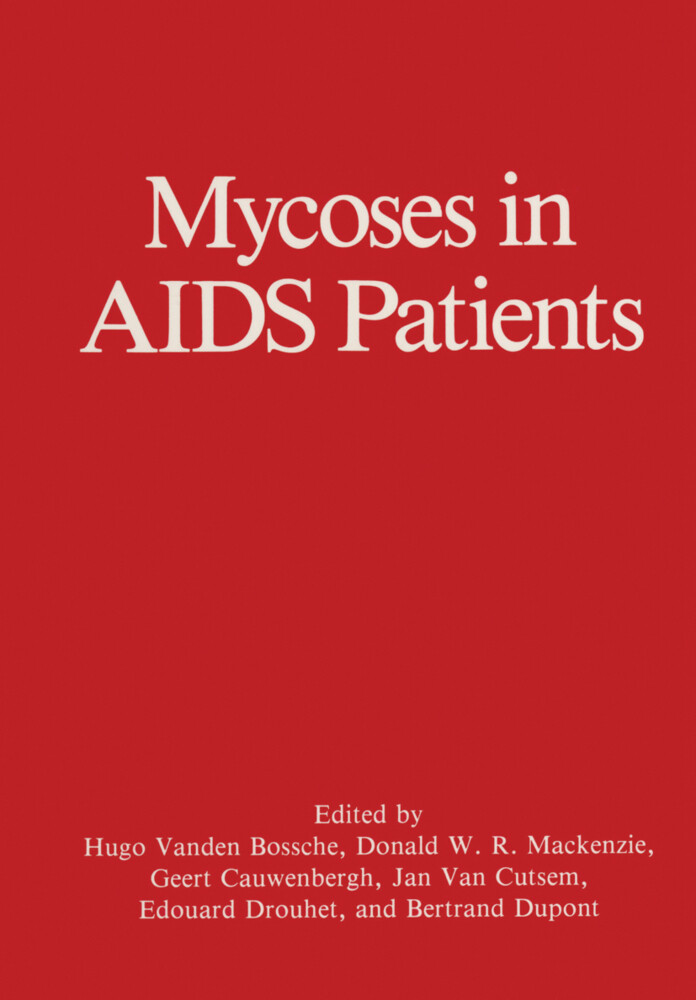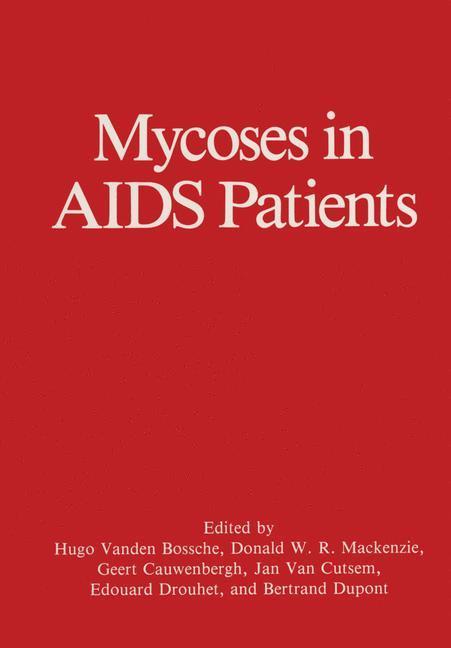
Zustellung: Do, 28.11. - Sa, 30.11.
Versand in 2 Tagen
VersandkostenfreiBestellen & in Filiale abholen:
The World Health Organization estimates that at least five million people worldwide are infected with human immunodeficiency virus (HIV) Of these about 100,000 are in Asia and Oceania, 500,000 in Europe, 2 million in the Americas and 2.5 million in Africa (Mann, 1989). The acquired immunodeficiency syndrome is characterized by a derangement in cell-mediated immunity leading to opportunistic infections with for example Mycobacterium spp., Candida spp., Cryptococcus neoformans, Pneumocystis carinii, Toxoplasma gondii and Cryptosporidium. The third symposium on "Topics in Mycology" brought together 265 experts from 32 countries to discuss the epidemiology, immmunological and pathogenetic aspects of AIDS and its opportunistic infections in general and fungal infections in particular. Pneumocystis carinii pneumonia is by far the commonest opportunistic infection in AIDS patients. The nature and classification of P. carinii is still controversial. In search for its true taxonomic affinities an introductory paper formulates a number of key questions. Candidosis is another frequent opportunistic infection. A number of papers discuss the possibility that selective pressures may operate on Candida albicans within the AIDS population and influence its nature: this might have an impact on prophylaxis and curative and/or suppressive therapy.
Inhaltsverzeichnis
Introductory Papers.- Epidemiology of AIDS and Its Opportunistic Infections.- Immunologic and Pathogenic Aspects of HIV Infections: Current Hypothesis.- Mycoses in AIDS Patients. An Overview.- Pneumocystis carinii: A Nomadic Taxon.- Candida, and Candidosis in AIDS Patients.- Epidemiology of Candida Infections in AIDS.- Candidemia in Patients with Acquired Immunodeficiency Syndrome.- Immunological Aspects of Candidosis in AIDS Patients.- Controversial Aspects of Candidiasis in the Acquired Immunodeficiency Syndrome.- Cryptococcosis.- Ecology of Cryptococcus neoformans and Prevalence of Its Two Varieties in AIDS and Non-AIDS Associated Cryptococcosis.- Clinical Aspects of Cryptococcosis in Patients with AIDS.- Immunological Aspects of Cryptococcosis in AIDS Patients.- Dermatomycoses and Rare Mycoses in AIDS Patients.- Dermatophytes and Pityrosporum in AIDS Patients.- Clinical Aspects of Dermatomycoses in AIDS Patients.- Unusual Mycoses in AIDS Patients.- Mechanism of Pathogenesis- Why Are Certain Mycoses Rare in AIDS Patients?.- Dimorphic Fungi.- Histoplasma in AIDS Patients.- Coccidioides immitis in AIDS Patients.- The Major Endemic Mycoses in the Setting of AIDS: Clinical Manifestations.- Immunological Aspects of Dimorphic Fungi in AIDS.- Chemotherapy.- Current Status and Perspectives of Antifungal Therapy.- Fungal Models in Immunocompromised Animals.- Mode of Action of Antifungals of Use in Immunocompromised Patients. Focus on Candida glabrata and Histoplasma capsulatum.- Pharmacokinetics of Antifungals.- Skin Candidosis in AIDS Patients. Effects of Ketoconazole and Itraconazole. Focus on Tissue Levels.- The Modern Revolution in Antifungal Drug Therapy.- Treatment of Candidosis in AIDS Patients.- Cryptococcal Meningitis in AIDS Patients- A Pilot Study of Fluconazole Therapy in 52 Patients.- Oral Itraconazole Therapy of Cryptococcal Meningitis and Cryptococcosis in Patients with AIDS.- Treatment of Dermatomycosis in AIDS Patients.
Produktdetails
Erscheinungsdatum
17. September 2011
Sprache
englisch
Auflage
Softcover reprint of the original 1st ed. 1990
Seitenanzahl
352
Herausgegeben von
Geert Cauwenbergh, Jan van Cutsem, Edouard Drouhet, Donald W. R. Mackenzie, Hugo Vanden Bossche
Verlag/Hersteller
Produktart
kartoniert
Abbildungen
348 p.
Gewicht
608 g
Größe (L/B/H)
244/170/20 mm
Sonstiges
Paperback
ISBN
9781461279129
Entdecken Sie mehr
Bewertungen
0 Bewertungen
Es wurden noch keine Bewertungen abgegeben. Schreiben Sie die erste Bewertung zu "Mycoses in AIDS Patients" und helfen Sie damit anderen bei der Kaufentscheidung.










